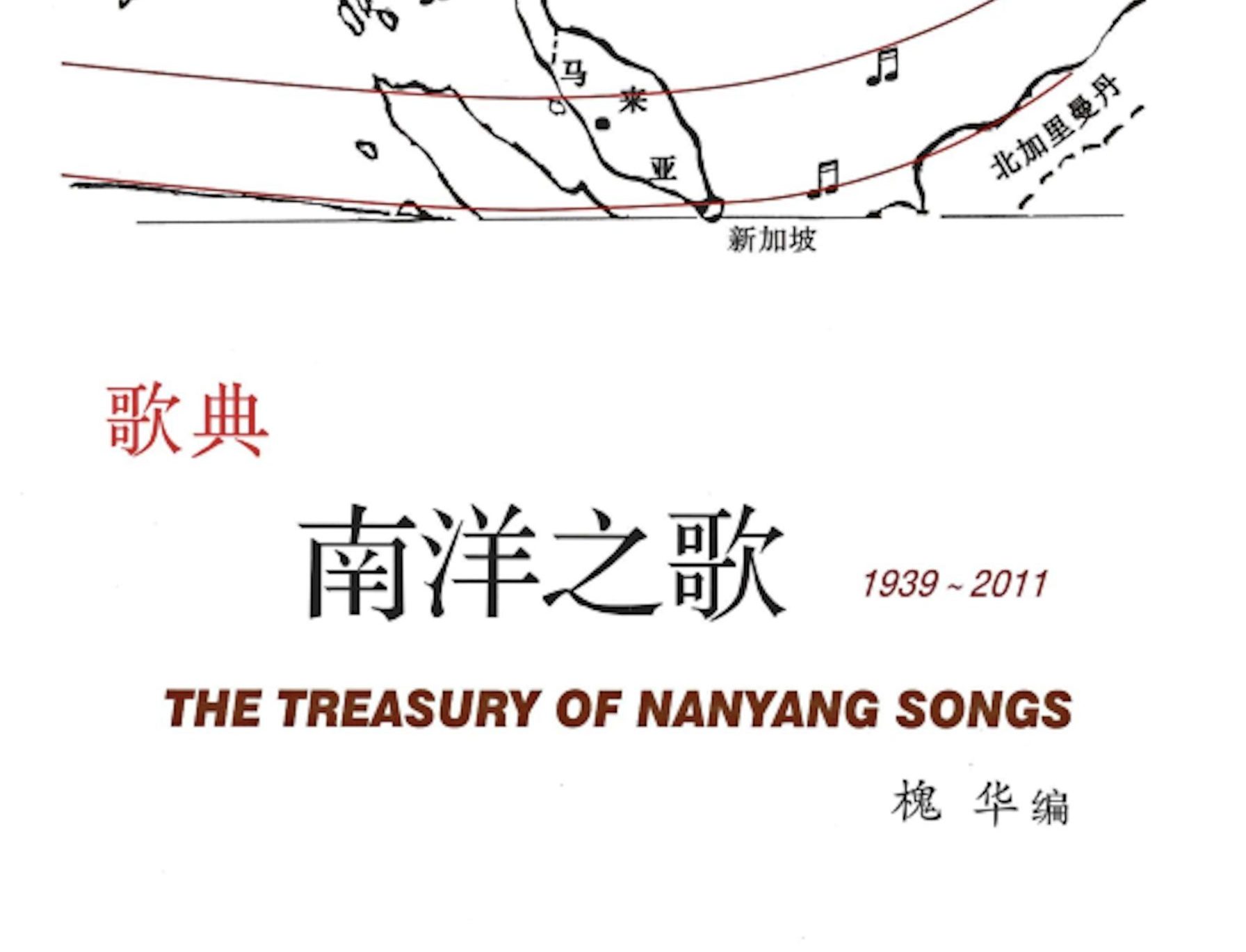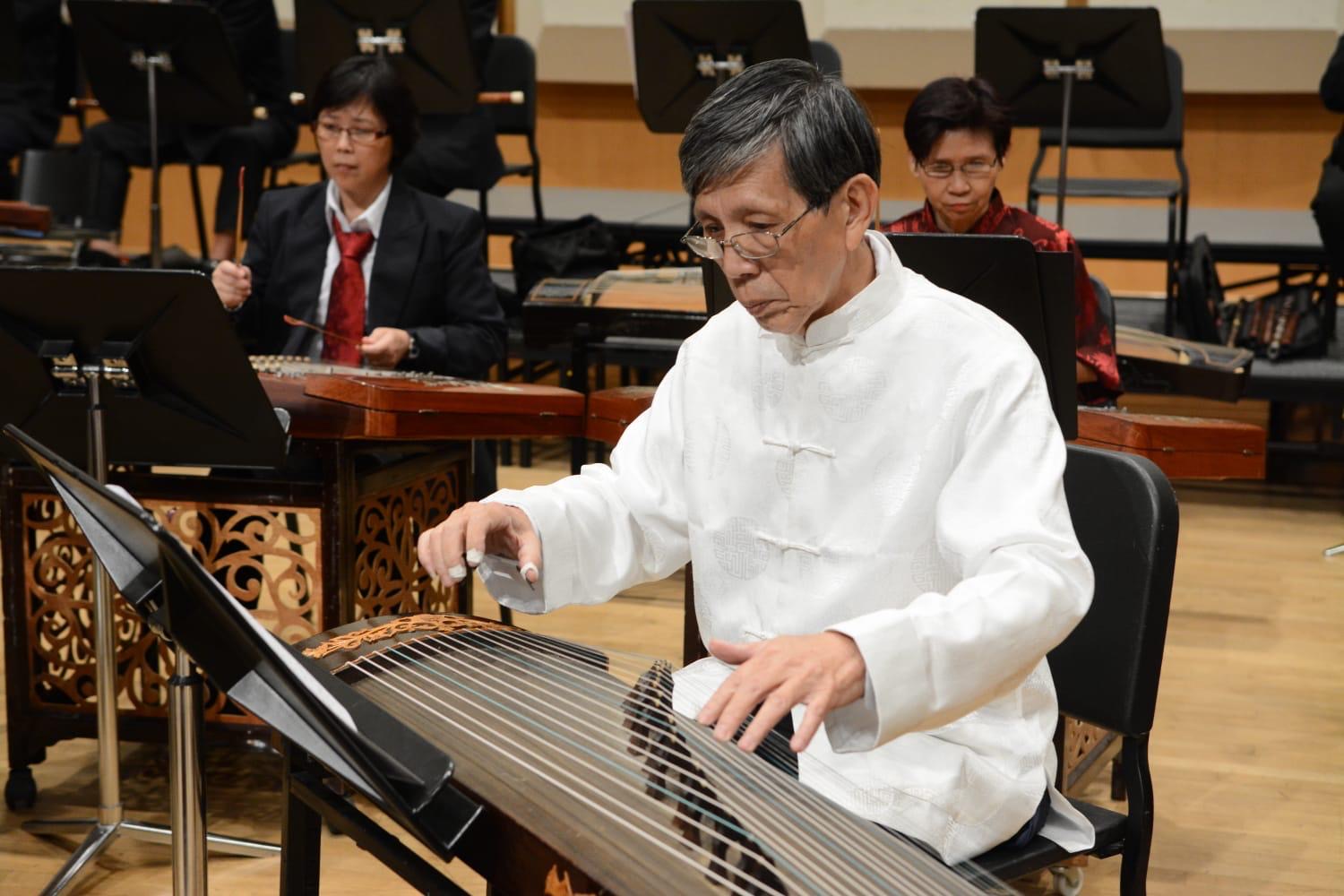Xinyao: The cultural phenomenon of Mandarin songwriting
The term xinyao first appeared on 4 September 1982, at a seminar on Singapore’s Mandarin pop music titled Women chang zhe de ge (The Songs We Sing). Organiser Peh Chon Seang, who was from the media, had proposed it as a term to refer to original songs by young Singaporeans. The media promptly picked up on it, and before long, xinyao was widely used to refer to Mandarin ballads composed by the youth in Singapore.
In 2018, xinyao was included in the National Heritage Board’s inventory of 50 intangible cultural heritage elements. Prior to that, the term had been documented in the Times Dictionary of Singapore Chinese in 1999, and in The New Grove Dictionary of Music and Musicians in 2001.
The development of xinyao
The emergence of xinyao was an unexpected phenomenon. In the mid-1970s, Taiwanese campus folk songs had risen in prominence and were gaining popularity, influencing many students in Singapore. In contrast to mainstream pop songs from Hong Kong and Taiwan, these Taiwanese campus songs had more refined melodies and lyrics that were closer to the lives and sensibilities of Singapore’s youths. Their rich, literary lyrics struck an emotional chord.
Many of Singapore’s students were inspired and started to compose songs themselves, using them as a way to express their feelings and thoughts. With support from print media, radio, and television stations, a great number of xinyao groups started to form on various campuses. The Mandarin songwriting scene took off.

Our Singers and Songwriters (1982–1989), a radio programme created and hosted by broadcaster Lim Cher Hui on Singapore Broadcasting Corporation’s Radio 3 (now Mediacorp’s CAPITAL 958), played a crucial role in promoting the xinyao movement by providing a platform for amateur songwriters to showcase their works. It was through this programme that many of the main players of xinyao were first introduced to the public. Among them were xinyao groups such as Shuicao Sanchongchang (The Straw Trio: Billy Koh, Koh Nam Seng and Ng Guan Seng); Dixiatie (Subway: Eric Moo, Low Swee Chen, Tan Kah Beng, and others); Hefeng (Breeze: Dawn Gan [1963–2018], and others); Qingqing Cao (Green grass: Roy Loi Fey Huei, and others); Yayun (Elegant rhymes: Lee Soon Guan, Ong Pang Kit, and others); and Lang Tao Sha (Waves washing sand: Lee Hock Ming and Lam Chao Phang). There were also solo artistes such as Liang Wern Fook. One of the many songs presented on Our Singers and Songwriters was Xiehou (Encounter), composed and sung by Eric Moo and Huang Huizhen. In a first, it topped the music charts before the song had even been recorded in an album.
Our Singers and Songwriters was not the only radio show featuring original local music. Another was Diyi ge yinfu (The First Note), launched by cable-transmitted radio station Rediffusion Singapore in 1990.
Xinyao albums
As the songwriters were students, most xinyao compositions were simply accompanied by guitar and piano, with some incorporating instruments such as the violin and harmonica. Whether they were sung live on campus or recorded for radio, early xinyao songs were known for their simple, elegant style. It was only when the songs were recorded for albums that the arrangements became more elaborate.
The first xinyao compilation album by several singers and songwriters, Mingtian 21 (Tomorrow we’ll be 21) was released to great success in May 1984, with sales exceeding 10,000 cassette tapes. Songs from the album, such as Shamo zuji (Desert Trail), Xiehou, and Dongdong de gushi (Story of Dongdong), made their way onto Singapore’s pop music charts. Xinyao became a major cultural phenomenon in Singapore’s Mandarin music scene in the 1980s, garnering coverage from local Chinese and English media.
The 1980s were the heyday of xinyao. The annual Xinyao Festival was held six times between 1985 and 1990, and the Sing Music Awards was introduced in the third edition of the festival to recognise outstanding performers and songwriters. Besides radio shows, many members of xinyao groups also took part in Chinese Talentime, and wrote songs for local Mandarin television dramas.
As the quality of xinyao compositions matured, numerous songs were picked up by overseas singers. Hong Kong singer Paula Tsui Siu Fung covered Yifu hua (A Picture), originally by the group Tiao Dong Lü (Beat rate: Chua Ee Gein, Chew Chuan Lee, and others). Taiwanese singer Monique Lin also recorded a rendition of Pan Ying’s hit song Talking As Before. There were also attempts to sing xinyao songs with English and Cantonese lyrics, but those met with little success.

Around 1990, the definition of xinyao had broadened to include any songs written by Singaporeans.1 From the 1990s, however, the lustre of the music movement started to fade. Fewer emerging artistes were calling their works “xinyao”, and local singers who debuted in this period — among them Jimmy Ye, Kit Chan, Mavis Hee, and Joi Chua — were not dubbed “xinyao singers” either. However, the teams involved in writing and producing songs for these artistes often comprised xinyao veterans such as Tan Kah Beng, Ng King Kang, and Billy Koh. Xinyao continued to exert its influence in different ways in a “post-xinyao” era. During this time, xinyao activities scaled down considerably — the national xinyao camps organised by a non-profit group Feeling Station in 1991, 1992, and 1994 being some of the more significant ones. These nurtured many music artists who are still active today.2 The prevalence of folk music cafés in the 1990s, coupled with new consumer trends among young people, also helped to keep the spirit of xinyao alive.
Xinyao in the 21st century
In the 21st century, xinyao continues to be enjoyed by new and old audiences alike. Event management and music recording company TCR Music Station has organised a series of xinyao concerts since 2012. The 2023 edition was named Xinyao 41 (明天41) — a nod to the title of the 1984 xinyao album, Mingtian 21 (明天21), and harking back to old times even as the music lives on.
Another event is the Xin Kong Xia National Schools Xinyao Festival, a xinyao singing and songwriting competition produced by TCR Music Station and jointly organised by the Committee to Promote Chinese Language Learning, Lianhe Zaobao, and Jurong Pioneer Junior College (a merger of Jurong Junior College and Pioneer Junior College). Held annually since 2015, it exposes the younger generation to xinyao.
Xinyao is an important cultural phenomenon in Singapore. Scholars have noted that xinyao lyrics speak to local youth’s awareness of their identity and shared sense of identity.3 The fact that xinyao musicians — originally amateurs making music on campus — went on to produce records, establish record companies, and gradually enter the mainstream of pop music, reflects the many directions in which xinyao developed. It is an important chapter in the history of Mandarin music in Singapore.
Oral interview records of individuals related to Xinyao
- Ang Cheng Bin, oral history interview by Teo Kian Giap, 7 February 2011, transcript and audio, National Archives of Singapore (accession no. 003585), Reel 1–3.
- Ang Peter @ Hong Shao Xuan, oral history interview by Teo Kian Giap, 7 June 2010, audio, National Archives of Singapore (accession no. 003532), Reel 1–6.
- Chang Mei Hsiang, oral history interview by Teo Kian Giap, 6 June 2011, audio, National Archives of Singapore (accession no. 003517), Reel 1–5.
- Chua Ee Gein @ Cai Yi Ren, oral history interview by Teo Kian Giap, 17 January 2011, audio, National Archives of Singapore (accession no. 003587), Reel 1–5.
- Gan, Dawn Lay Beng, oral history interview by Teo Kian Giap, 24 May 2010, audio and transcript, National Archives of Singapore (accession no. 003520), Reel 1–4.
- Goh, Colin Jenfong, oral history interview by Teo Kian Giap, 30 March 2010, audio and transcript, National Archives of Singapore (accession no. 003336), Reel 1–3.
- Koh, Billy Huan Liang, oral history interview by Teo Kian Giap, 19 February 2010, audio and transcript, National Archives of Singapore (accession no. 003483), Reel 1–3.
- Lim Cher Hui, oral history interview by Teo Kian Giap, 1 June 2010, audio and transcript, National Archives of Singapore (accession no. 003523), Reel 1–5.
- Loi Fey Huei, oral history interview by Teo Kian Giap, 21 September 2010, audio, National Archives of Singapore (accession no. 003457), Reel 1–13.
- Moo Chii Yuan @ Eric Moo, oral history interview by Teo Kian Giap, 18 November 2010, audio and transcript, National Archives of Singapore (accession no. 003543), Reel 1–4.
- Pang Siew Moi, oral history interview by Teo Kian Giap, 14 October 2010, audio, National Archives of Singapore (accession no. 003568), Reel 1–13.
- Qi, Colin Zhe Quan, oral history interview by Teo Kian Giap, 15 November 2010, audio, National Archives of Singapore (accession no. 003593), Reel 1–6.
- So Heng, oral history interview by Teo Kian Giap, 10 February 2011, audio, National Archives of Singapore (accession no. 003572), Reel 1–6.
- Wong Hong Mok, oral history interview by Teo Kian Giap, 10 June 2010, audio, National Archives of Singapore (accession no. 003529), Reel 1–5.
This is an edited and translated version of 华语歌曲创作文化现象:新谣. Click here to read original piece.
| 1 | Liang Wern Fook, ed., Xinyao: women de ge zai zheli [Xinyao: Our songs are here], 70. |
| 2 | Liang Wern Fook, ed., Xinyao: women de ge zai zheli [Xinyao: Our songs are here], 125. |
| 3 | Lily Kong, “Making ‘music at the margin’? A social and cultural analysis of Xinyao in Singapore”, 99–124. |
Hong, Tianli, Yeoh, Elaine et al., eds. Chi chu 1 (1995). Singapore: Jiaocha dian chuban she, 1995. | |
Liang, Wern Fook, ed. Xinyao: women de ge zai zheli [Xinyao: Our songs are here]. Singapore: Composers and Authors Society of Singapore, 2004. | |
Tang, Eva, ed. Women chang zhe de ge: xinyao jilupian fangtanji [The songs we sang]. Singapore: Singapore Hokkien Huay Kuan, 2017. | |
“Xinyao jinnianlai de jieshou yu fazhan: yi dianying Wo de pengyou, Wo de tongxue, Wo aiguo de yiqie wei zhongxin zhi kaocha” [Reception and development of Xinyao in recent years: A study focused on the film That Girl in Pinafore]. In Xueshu youmiao jihua lunwenji: Di shi qi [SAP Schools Chinese Research Mentorship Programme: Volume 10], 67–79. Singapore: Nan Hua High School, 2014. |










